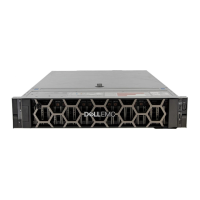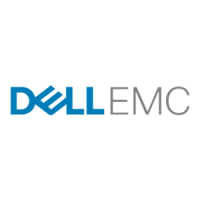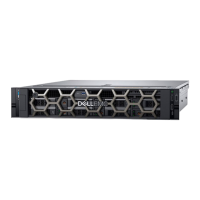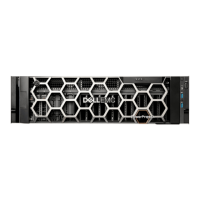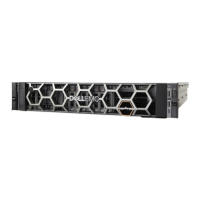Number Severity Description/Recommended actions
Recommended actions:
• No action is required.
617 Warning The spare capacity goal is not met.
This event indicates that the available space in the system is insucient to provide the level of full fault
tolerance that is specied by the target spare capacity. Spare capacity availability can be inuenced by
operations that require available space in the system, such as reconstructing data from a failed disk.
Recommended actions:
• Add disks to the disk group, or replace any disks that may have failed. The system will automatically
increase the spare capacity to meet the requirements placed on the system by the target spare capacity.
618 Resolved The spare capacity goal is met.
Recommended actions:
• No action is required.
619 Error Disk access will change depending on the port used to connect to the expander.
Recommended actions:
• Load a valid rmware bundle to disable zoning.
Info. The controller has been injected with a fault to introduce a broadcast receiver (BR) link error.
Recommended actions:
• No action is required.
Resolved Expander zoning has been disabled for the indicated enclosure.
Recommended actions:
• No action is required.
Using the trust command
The CLI trust command should only be used as a last step in a disaster recovery situation. This command has the potential to cause
permanent data loss and unstable operation of the disk group. If a disk group with a single disk is in a leftover or failed condition, the trust
command should never be used. The trust command can only be used if the disk group is in an Oine state.
If a single disk in a disk group has failed or been placed into a Leftover state due to errors, reintegrating the disk into the same or a dierent
disk group has the potential to cause data loss. A disk that has failed or been placed into a Leftover state due to multiple errors should be
replaced with a new disk. Assign the new disk back to the disk group as a spare and allow reconstruction to complete in order to return the
disk group to a fault tolerant state.
The trust command attempts to resynchronize leftover disks in order to make any leftover disk an active member of the disk group again.
The user might need to take this step when a disk group is oine because there is no data backup, or as a last attempt to try to recover
the data on a disk group. In this case, trust may work, but only as long as the leftover disk continues to operate. When the "trusted" disk
group is back online, backup all data on the disk group and verify all data to ensure it is valid. The user then needs to delete the trusted disk
group, add a new disk group, and restore data from the backup to the new disk group.
IMPORTANT
: Using trust on a disk group is only a disaster-recovery measure. The disk group has no tolerance for additional
failures and should never be put back into a production environment.
CAUTION: Before trusting a disk group, carefully read the cautions and procedures for using the trust command in the CLI
Reference Guide and online help. If you are uncertain whether to use this command, contact technical support for assistance.
Events and event messages 139

